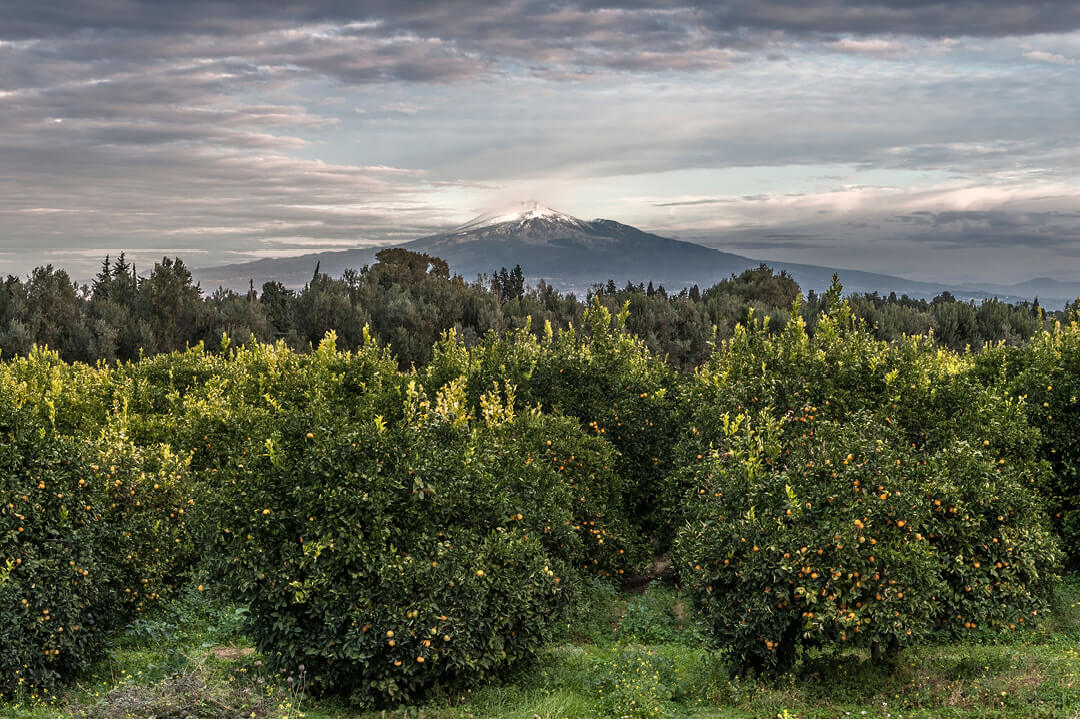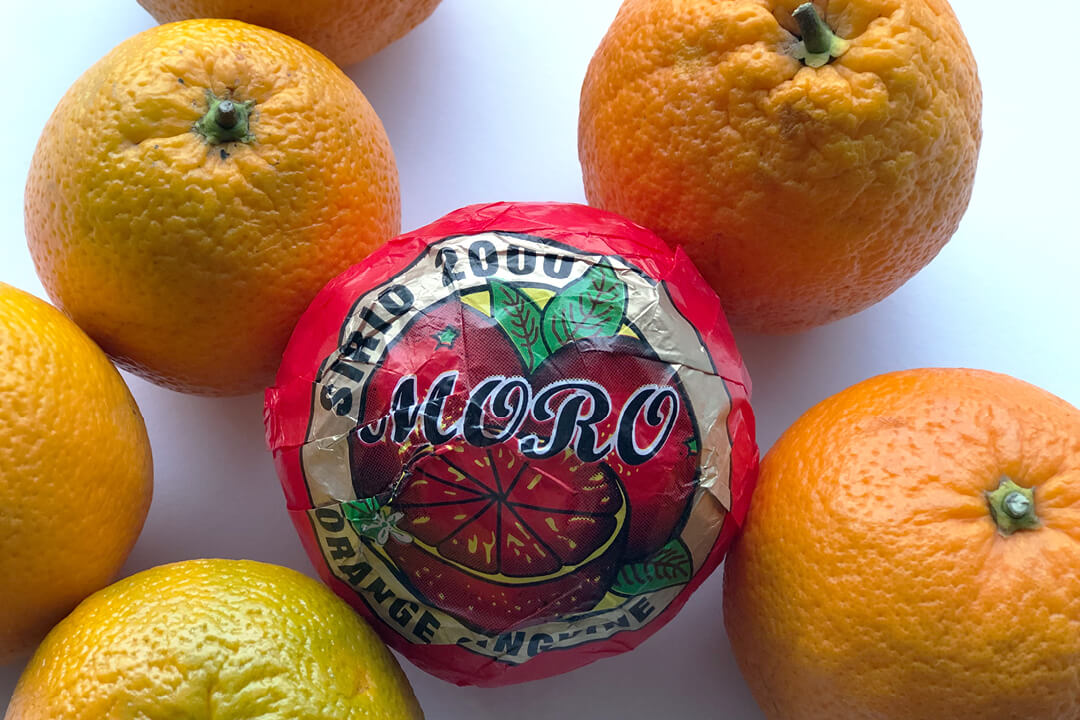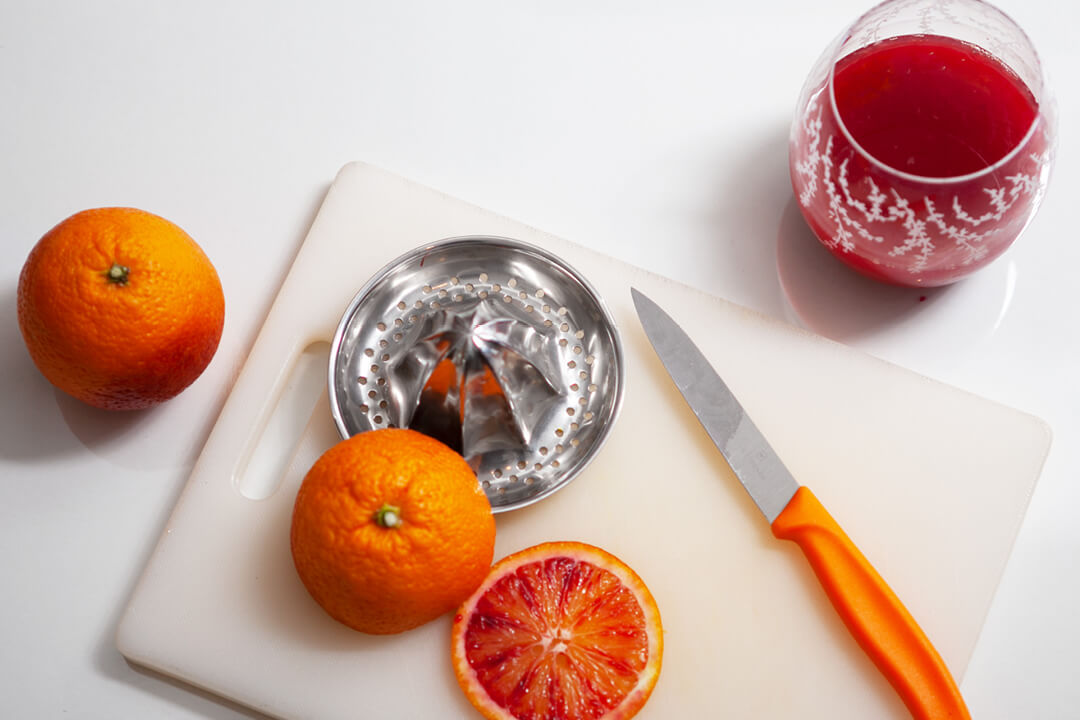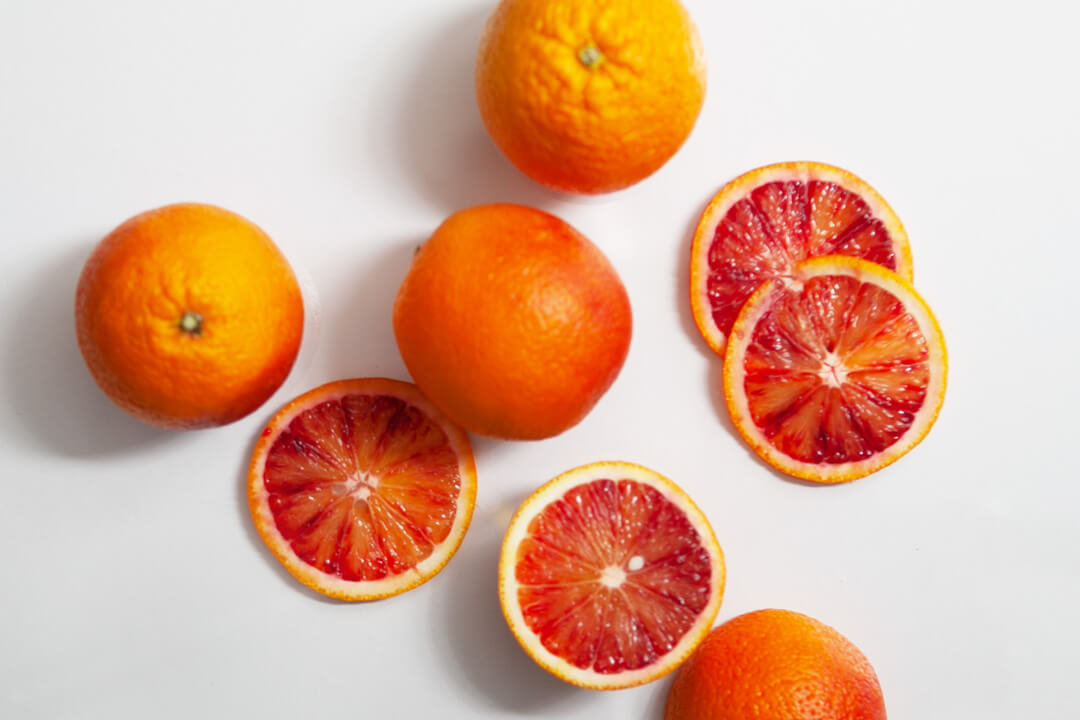Don’t leave home without it
Blood oranges are only available for a short time outside the countries where they are harvested. If you see blood oranges on the market or in the shops, grab them.
Perfect breakfast
A bar in Italy is the perfect place for breakfast: a perfectly formed espresso in a well-warmed cup, freshly squeezed blood orange juice and a cornetto. There’s no better way to start the day.
You can treat yourself to fresh blood orange juice every morning at home at the moment, because blood oranges are in season.
Particularly aromatic blood oranges are grown at the foot of Mount Etna in Sicily. In order for oranges to acquire the dark red coloring that gave them their name, they need relatively large temperature differences during their ripening period.
The climate in Sicily with sunny days and relatively cold nights in winter is ideal and the volcanic soils around Mount Etna also offer good conditions.
 Blood orange plantation in Sicily on Mount Etna © Alex Ramsay, Alamy Stock Photo
Blood orange plantation in Sicily on Mount Etna © Alex Ramsay, Alamy Stock Photo
The blood oranges of Sicily
If you see the variety names Tarocco, Moro or Sanguinello on the labels of blood oranges, the blood oranges come from Sicily and most probably from an orange grove around Mount Etna.
Then you will be lucky enough to find a hint of raspberry and a subtle bitterness in the orange flavor.
The blood orange originally comes from China and was brought to Europe by Portuguese sailors. The Moro blood orange variety, whose name was once almost synonymous with the blood orange, was cultivated in Sicily.

However, Sicilian blood oranges are now rarely found outside of Italy. The majority of blood oranges in Europe come from Spain, where they tend to be grown sweet, as well as from plantations in North and South Africa, Costa Rica and other countries.
Freshly squeezed is freshly squeezed
You can get ready-made blood orange juice all year round, but the taste experience (we’ve tried pretty much every variety we could find by now) is a far cry from freshly squeezed blood orange juice.
A small glass of freshly squeezed orange juice provides the ideal morning kick and also supplies plenty of vitamin C, promising antioxidants and the other trace elements typical of citrus fruits.

If there is no time to squeeze oranges in the morning, freshly squeezed blood orange juice is an ideal ingredient for a non-alcoholic aperitif in the evening in Dry January and any other month.
Freshly squeezed blood orange juice with the alcohol-free Dr. Jaglas Herber Hibiskus, which contains bitter oranges, rosemary and vanilla as well as hibiscus blossoms, with a slice of natural lemon in the glass leaves nothing to be desired.
For the hard-working
If you have patience, skill and a sharp fruit knife, you can fillet the blood oranges and make an excellent salad with sliced fennel and red onion and red onion cut into thin half-moons.
The aromatic combination with the slightly bitter taste goes perfectly with fish. With a smoked mackerel fillet and a good loaf of bread, it makes a formidable meal.
Carola Deichl from Bayerischer Rundfunk (Wir in Bayern) uses some filleted blood orange pieces, the juice of blood oranges and buttermilk to make a cake that we will definitely be trying out before the short season of blood oranges is over again at the end of March.
In the meantime, blood orange spread is on our breakfast table at the weekend and we dream of our next trip to Vienna and a visit to Steirereck.
The restaurant has a special love of citrus fruits, which it charmingly sources from the Orangery at Schönbrunn Palace.
The citrus fruits are candied in the restaurant and served with coffee. A dream for every citrus lover.
#Advertising #ProductPlacement #IndependentRecommendation #BecauseWeLoveIt
Photographs Food © GloriousMe




